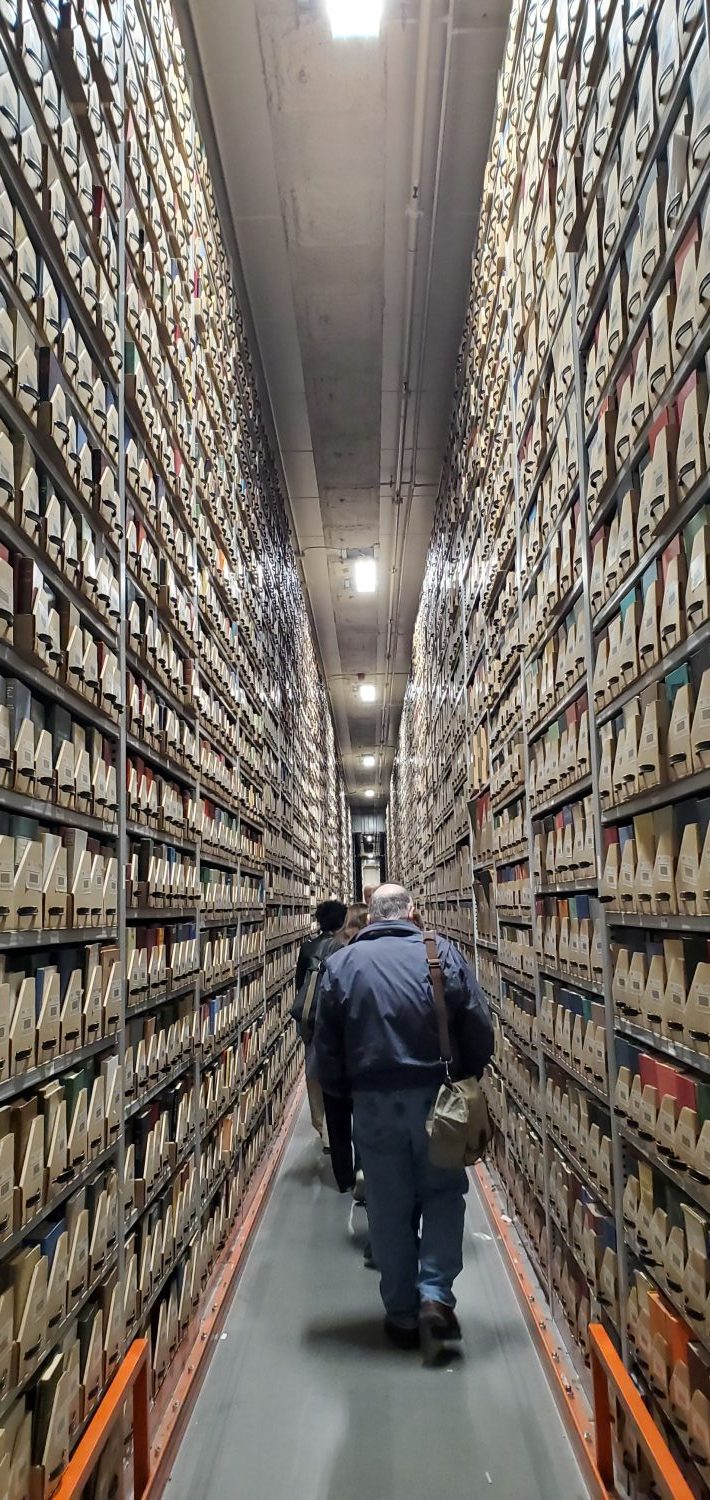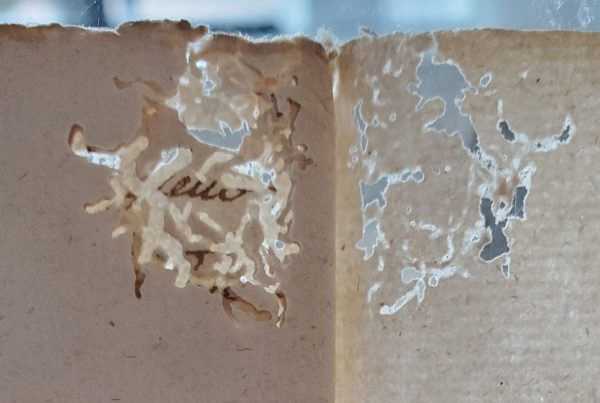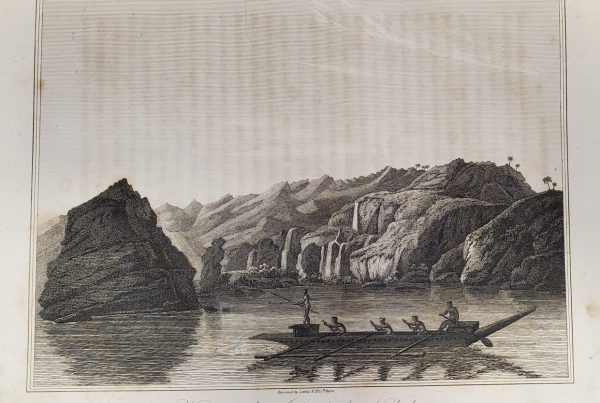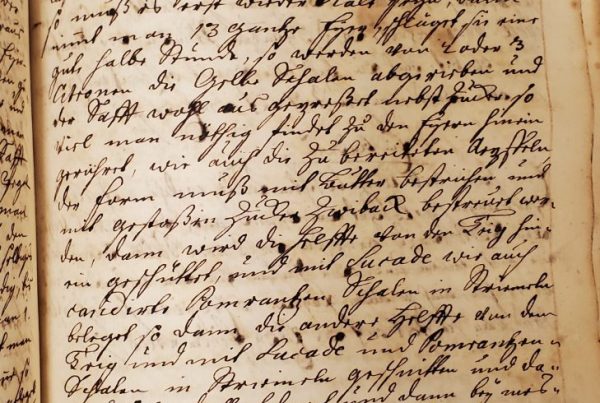In a recent article in Perspectives: The newsmagazine of the American Historical Association, Karin Wulf writes about archival collections that seem to “shout” as opposed to those that have been “quieted.”
Wulf, the new Director of the John Carter Brown Library (in Providence, RI), writes that “sometimes it can seem like the entire collection is shouting.” This is a curious idea, particularly juxtaposed with an image of orderly archival boxes on spotlessly clean shelves.
Wulf writes, “Naming the shouting is an explicit acknowledgment that some archives or sections of archives have long garnered outsize focus, and it attunes us to how their volume has shaped our histories.” As an example, she notes a well-known collection at the Massachusetts Historical Society – deeply studied, excellently catalogued and described – the John Adams Family Papers. Wulf comments, “John Adams was always a shouter, but his archives have been given a mic and a sophisticated sound system.”
In contrast, Wulf notes that ” ‘Archival silence’ has become a shorthand for absences in archival records. It also refers to biases in collections, collecting habits, and institutions that occlude people and their histories, and the power dynamics that are as present in the materials and the institutions as they are in the economic, social, political, and other relationships and structures they document.” Here she notes that in the John Carter Brown Library, women authors are relatively hard to find even though the collection has many items by and about historical women. In my last blog post, I mentioned that this is a problem for the Bell Library as well, and that one of the ways we have tried to amplify women’s voices in our collection is through “featured collections” in the U of MN catalog.
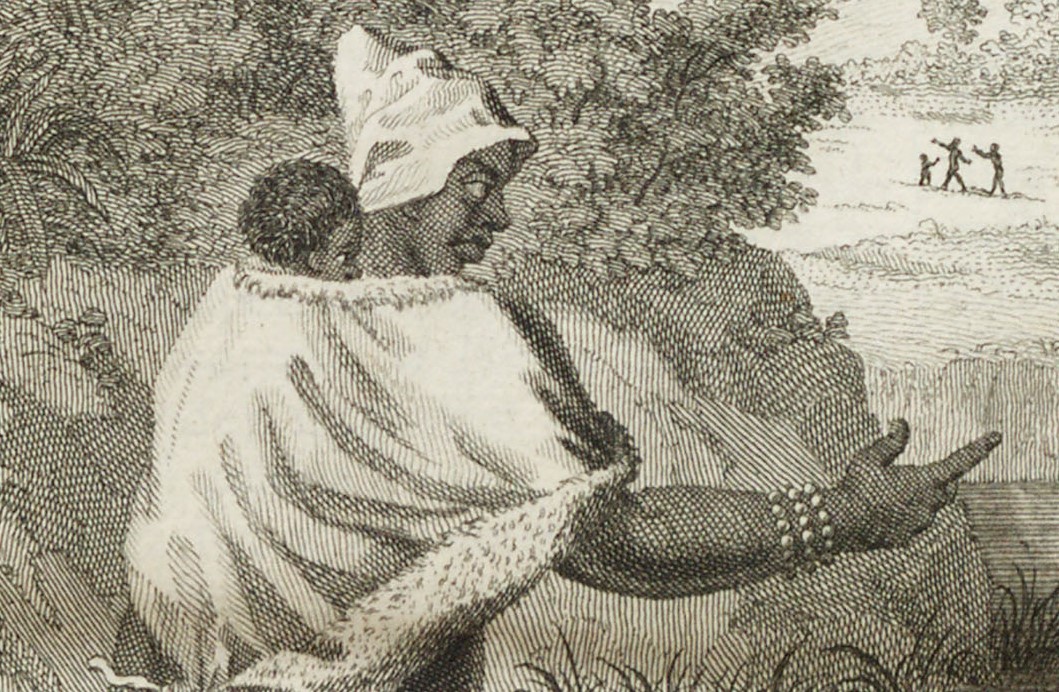
Depiction of a Khoikhoi mother and baby, indigenous people of the Cape of Good Hope in southern Africa, from Peter Kolb, Naaukeurige en uitvoerige beschryving van de Kaap de Goede Hoop, vol. 2 (Amsterdam, 1727), Bell Call # 1727 fKo.
Since the focus of the Bell Library is on the history and impact of trade and cultural exchange worldwide in the premodern period, in some ways, the records of trading companies, such as the archives of the Swedish East India Company (SEIC), have a megaphone in our vault. In the case of the SEIC, the archive has been described in detail and fully digitized. In the past, however, this archive was referred to by the name of a particular “super cargo” (or head merchant) of the SEIC, Charles Irvine, who features prominently in the collection. The choice to rename the archive helps us, first, to not valorize a particular person; it also shows more clearly that the collection has an incredible scope beyond this individual. The fact that most of the papers are in English gives this archive an amped-up volume too that is much harder to reach for those written in Dutch, Portuguese, or even Latin.
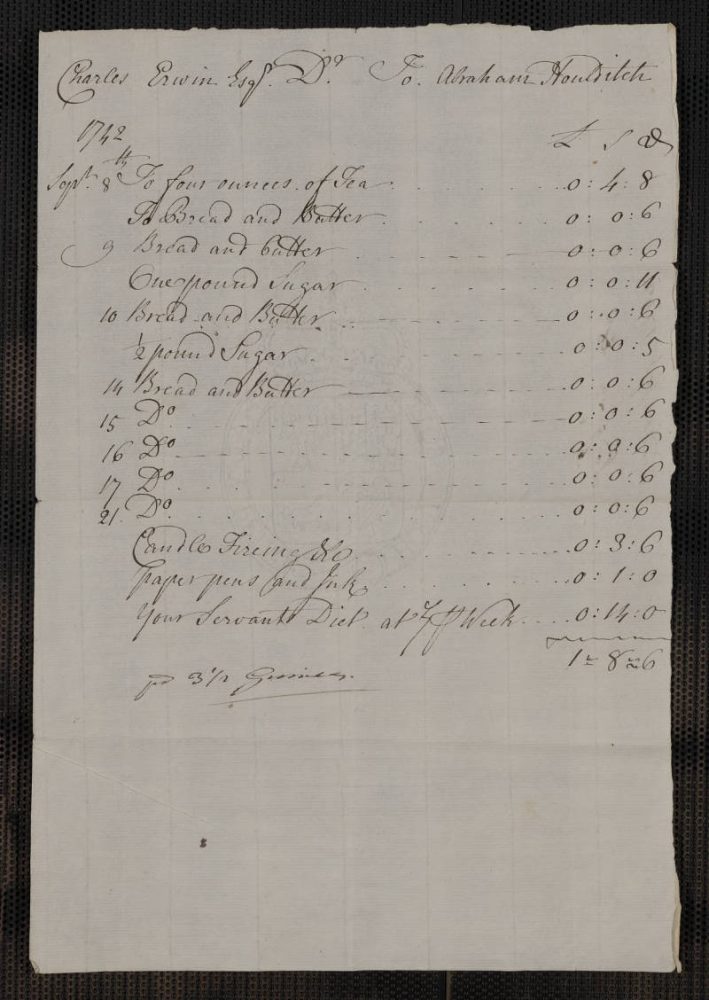
From the Swedish East India Company archive: a 1742 account for Charles Irvine — the basics, including bread, butter, tea and sugar, as well as pens, paper, and ink. Bell Call # 1732 fIr.
I think Wulf wants to highlight “archival shouting” because it has become so common to talk about “archival silences” that one almost glides over what that really means. Wulf writes, “As more archivists, librarians, and scholars are offering analyses of archives as active interpretive agents, it also suggests an approach to the role of institutions in the silence and shouting alike.”
I couldn’t agree more. So much of what we do at the Bell is focused on letting many different voices from the collection be heard. Metadata in catalog records, presentations to classes and community groups, work with students, exhibits in the Ford & Amy Bell Room, this blog, and consultations with researchers — all of this and more gives us opportunities to amplify a variety of voices in the historical materials and to encourage people to also hear these voices in their historical contexts. This work is indeed constantly ongoing, often difficult, but also entirely worthwhile.
Read the rest of Dr. Wulf’s insightful article to find out about other on-going projects in American historical archives.
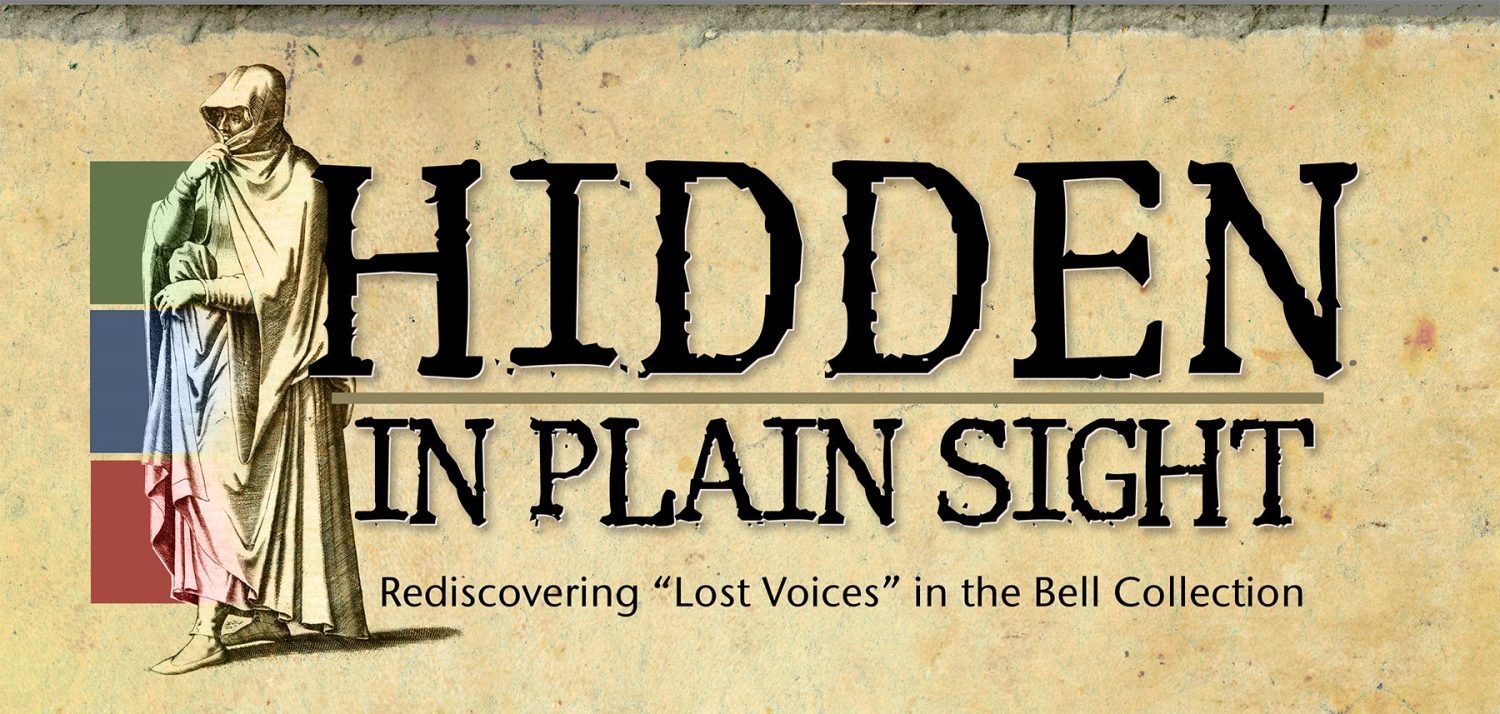
The inaugural exhibit for the Ford and Amy Bell Room, in 2021, introduced the concept for future exhibits in the room: rediscovering “lost voices” in the collection. The current exhibit, “Curious Strangers: Views of the Other on Early Modern Maps,” runs through 15 August.


